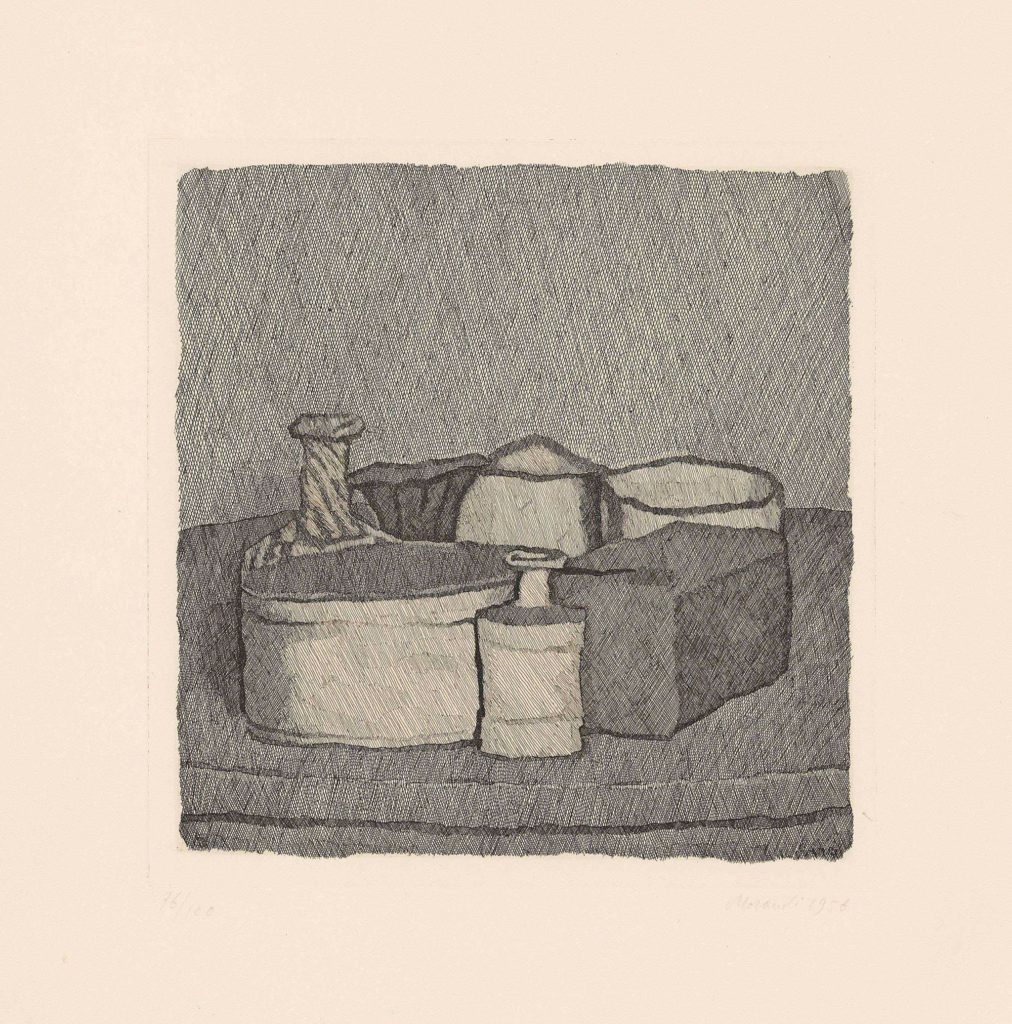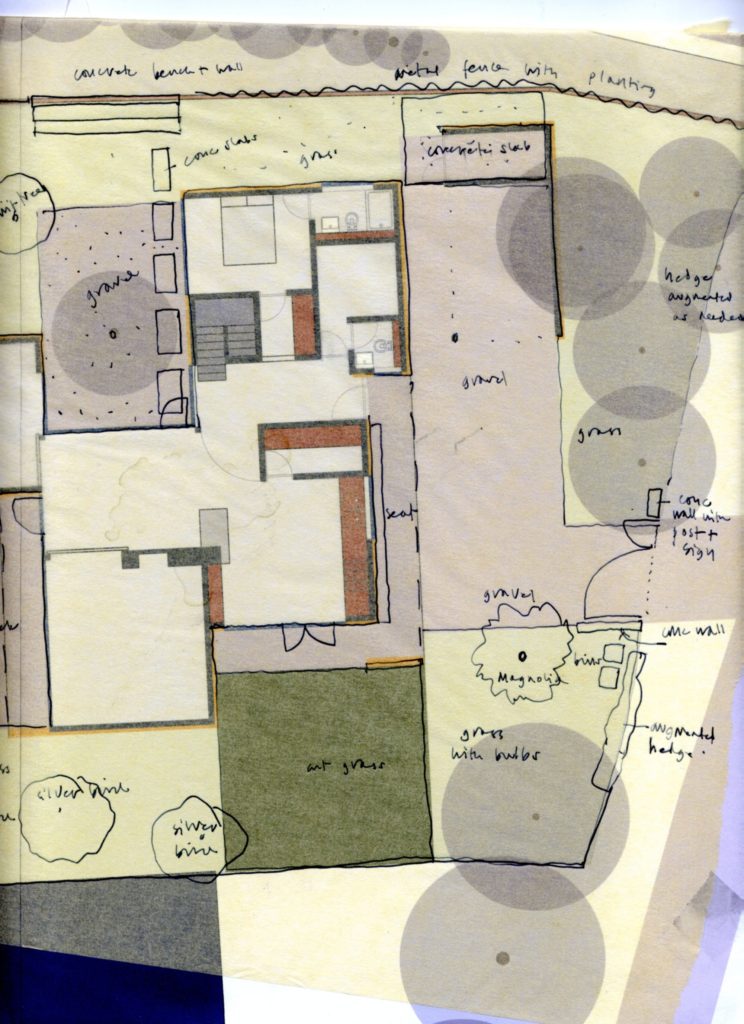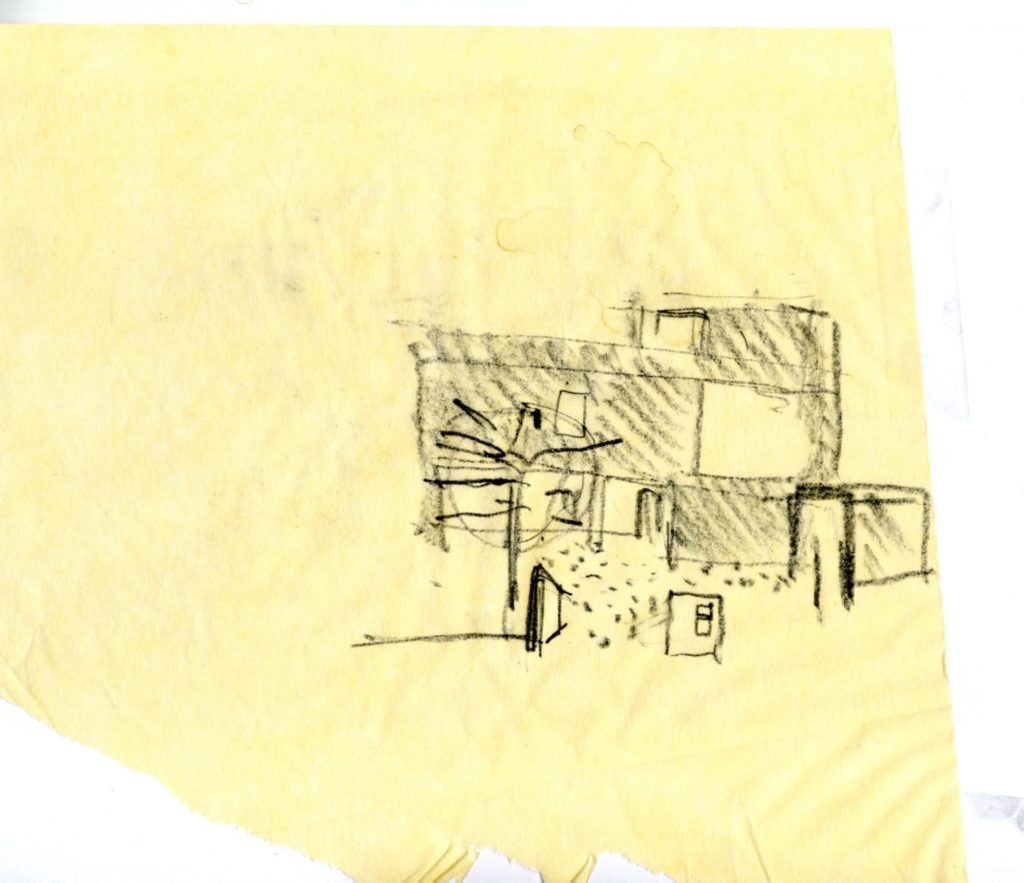Biba Dow on Giorgio Morandi: Group and Threshold
– Biba Dow
Giorgio Morandi’s work focused on studying again and again a small group of domestic objects – vases, jugs, bottles – in his home in Bologna. During his adult life, he produced a large quantity of paintings and etchings which together build up a shimmering representation of his field of focus. The familiar objects are depicted as pure forms in a field of tone. In this shared territory of colour and form, the objects acquire an abstraction which allows you to focus on the grouping as opposed to the individual elements. These images are both intensely spatial and intensely material.

The modest, functional character of the objects has receded. Instead we notice the space that holds these things together. Compellingly, the spatial field of the painting is represented with as much care and focus as the objects themselves. A sense of background and foreground, of subject itself, has receded. Instead, we enter this space ourselves.
In our office, Morandi’s paintings have become symbols of thresholds. In their capacity to hold a group of objects in a space, and in depicting the spatial tension between forms, Morandi’s paintings become powerful representations of the spaces in between, of thresholds.
The word threshold comes from ‘to tread’ or ‘thresh’. Originally describing a threshing floor, a separate space near the living quarters, the word became understood as the point of entry itself. Laden with poetic possibility, the threshold brings a heightened sense of spatial experience. In passing from outside in, from one space to the next, you sense the character of both spaces eliding. The threshold allows spaces to be defined and understood as whole, revealing the character of spaces, enriching connections, providing places to pause, to connect, and to observe.
The capacity of a spatial sequence to be richer than the elements each understood in isolation is one of the pleasures and powers of experiencing architecture, rather than just looking at images of it. Developing a relationship between light and material in a way which changes as you move, and as the day passes, can be intensely profound. While elements in plan can appear reduced and dry, their activation through movement and texture is rich.
We are inspired by Morandi’s paintings as we strive to make work which has a muteness in its elements, but which is spatially rewarding. In the house we designed in an orchard in Totland, on the Isle of Wight, the rooms extend themselves around the trees, finding spaces between them. The house being modest in size, the thresholds between rooms became very important ways of extending individual spaces, and making more nuanced connections between them.


Views between rooms, often across pieces of orchard, lengthen and layer the space of the house. Outside and in merge as the sun passes around the building, each room lit at a different time. The large fireplace which separates the living spaces also brings them together. The concrete floor panels define spaces but also connects them in a mat stretching out across the orchard. The trees, the fireplace, the long views, verandas, tall doors and the stair all make thresholds in between which the rooms find themselves. They become the grouping of forms, of objects in the space of the house.
